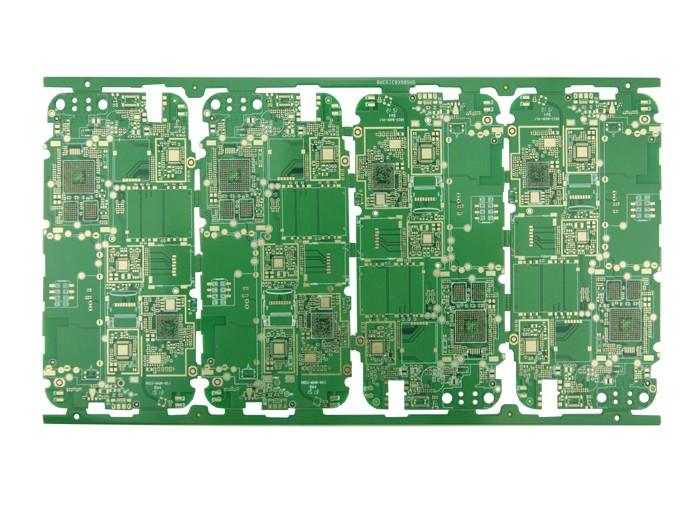The basic properties of characteristic impedance in high-speed PCB design
In high-speed PCB design, the characteristic impedance of controllable impedance boards and lines is one of the most important and common problems. First understand the definition of a transmission line: a transmission line is composed of two conductors with a certain length, and one conductor is used to send a signal.
The other is used to receive signals (remember the concept of "loop" instead of "ground"). In a multilayer board, each line is a component of the transmission line, and the adjacent reference plane can be used as the second line or loop. The key to a line becoming a "good performance" transmission line is to keep its characteristic impedance constant throughout the line.
The key to the PCB board becoming a "controllable impedance board" is to make the characteristic impedance of all circuits meet a specified value, usually between 25 ohms and 70 ohms. In a multilayer circuit board, the key to good transmission line performance is to keep its characteristic impedance constant throughout the line.
But what exactly is characteristic impedance? The easiest way to understand characteristic impedance is to look at what the signal encounters during transmission. When moving along a transmission line with the same cross-section, this is similar to the microwave transmission shown in Figure 1. Suppose a voltage step wave of 1 volt is added to this transmission line. For example, a 1 volt battery is connected to the front end of the transmission line (it is located between the transmission line and the loop). Once connected, the voltage wave signal travels along the line at the speed of light. Propagation, its speed is usually about 6 inches/nanosecond. Of course, this signal is indeed the voltage difference between the transmission line and the loop, and it can be measured from any point of the transmission line and the adjacent point of the loop. Fig. 2 is a schematic diagram of the transmission of the voltage signal.
Zen's method is to first "generate a signal" and then propagate it along this transmission line at a speed of 6 inches per nanosecond. The first 0.01 nanosecond advances 0.06 inches. At this time, the sending line has excess positive charge, and the loop has excess negative charge. It is the difference between these two kinds of charges that maintains the 1 volt voltage difference between the two conductors. And these two conductors form a capacitor.
In the next 0.01 nanosecond, to adjust the voltage of a 0.06 inch transmission line from 0 to 1 volt, it is necessary to add some positive charge to the transmitting line and some negative charge to the receiving line. For every 0.06 inch of movement, more positive charge must be added to the transmission line, and more negative charge must be added to the loop. Every 0.01 nanoseconds, another section of the transmission line must be charged, and then the signal starts to propagate along this section. The charge comes from the battery at the front end of the transmission line. When moving along this line, it charges the continuous part of the transmission line, thus forming a voltage difference of 1 volt between the transmission line and the loop. Every 0.01 nanosecond of advancement, some charge (±Q) is obtained from the battery, and the constant amount of electricity (±Q) flowing out of the battery in a constant time interval (±t) is a constant current. The negative current flowing into the loop is actually the same as the positive current flowing out, and it is just at the front end of the signal wave. The AC current passes through the capacitor formed by the upper and lower lines to end the entire cycle.
Line impedance
For batteries, when the signal propagates along the transmission line, the continuous 0.06 inch transmission line segment is charged every 0.01 nanoseconds. When a constant current is obtained from the power supply, the transmission line looks like an impedance, and its impedance value is constant, which can be called the "surge impedance" of the transmission line.

Similarly, when the signal propagates along the line, before the next step, within 0.01 nanoseconds, which current can increase the voltage of this step to 1 volt? This involves the concept of instantaneous impedance.
From the perspective of the battery, if the signal propagates along the transmission line at a stable speed, and the transmission line has the same cross-section, the same amount of charge is required for each step in 0.01 nanoseconds to generate the same signal voltage.
When going along this line, it will produce the same instantaneous impedance, which is regarded as a characteristic of the transmission line and is called the characteristic impedance. If the characteristic impedance of the signal at each step of the transmission process is the same, then the transmission line can be regarded as a controllable impedance transmission line.
Instantaneous impedance or characteristic impedance is very important to the quality of signal transmission. During the transfer process, if the impedance of the next step is equal to the impedance of the previous step, the work can proceed smoothly, but if the impedance changes, some problems will occur.
In order to achieve the best signal quality, the design goal of the internal connection is to keep the impedance as stable as possible during the signal transmission process. First, the characteristic impedance of the transmission line must be kept stable. Therefore, the production of controllable impedance boards becomes more and more important. In addition, other methods such as the shortest remaining wire length, end removal and whole wire use are also used to maintain the stability of the instantaneous impedance in signal transmission.